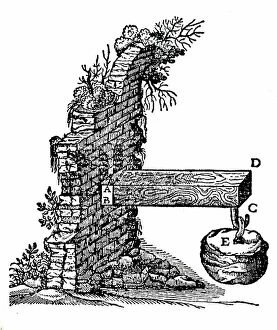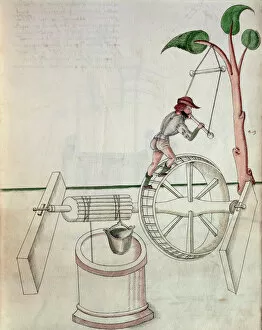Leverage Collection
"Leverage: Unleashing the Power of Ancient Ingenuity and Modern Innovation" From prehistoric times to modern-day marvels
All Professionally Made to Order for Quick Shipping
"Leverage: Unleashing the Power of Ancient Ingenuity and Modern Innovation" From prehistoric times to modern-day marvels, humanity has always sought ways to maximize their strength and efficiency. The concept of leverage, showcased through various historical artworks and illustrations, reveals our relentless pursuit of biomechanical advantage. In the depths of time, a prehistoric spear-thrower exemplifies early ingenuity. This primitive tool harnessed the power of leverage, allowing our ancestors to propel projectiles with greater force and accuracy. Centuries later, an illustration from De Machinis showcases a man putting into motion a wheel-driven well. Through clever engineering and understanding of mechanical advantage, this innovation revolutionized water extraction methods. Artistic masterpieces like "The Hollow Tree" by an unknown artist in 1876 depict woodcutters utilizing levers to effortlessly fell towering trees. Their expertise in leveraging these simple machines enabled them to conquer nature's mightiest giants. Similarly, Robert Hermann Sterl's painting "Quarrymen" captures workers using levers to move massive stones with ease. These quarrymen understood that by employing proper leverage techniques, they could overcome seemingly insurmountable obstacles. "The Power of the Lever, " depicted in an 1877 artwork, highlights how this fundamental principle underpins countless inventions throughout history. From ancient tools to complex machinery today, leverage remains at the core of human progress. During moments that shaped societies like the General Strike in 1926 or firefighting efforts captured in LFB firefighter images operating enclosed pump vehicles – levers played pivotal roles as brakes or mechanisms for saving lives amidst chaos. Even centuries-old works continue inspiring us; an 18th-century depiction shows a man operating a pulley system with precision using lever principles. Such timeless wisdom reminds us that harnessing leverage is not limited by time but rather transcends generations. As we reflect on these captivating glimpses into history's embrace of leverage, we recognize its enduring significance.



















